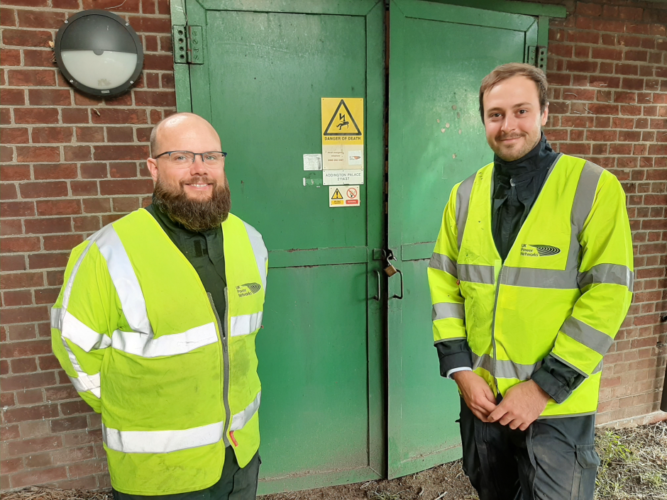
The devices have been installed at sites in New Addington, South London and East Grinstead, West Sussex, as part of a £435,000 trial by UK Power Networks (UKPN). Lucy Craig, director of growth, innovation and digital at DNV said Smart Cable Guards will allow grid operators to digitally monitor their systems.
The box-like devices fit onto an underground power cable where the technology continuously monitors cables for faults and the partial discharges indicative of cable weak spots that could lead to faults. A spokesperson for UKPN told The Engineer that the interface between device and cable is a Smart Split Core CT (current transformer) which sits round the earth wire or the whole cable.
MORE FROM ENERGY & ENVIRONMENT
According to DNV, a Smart Cable Guard includes two sensor units and two control units with one of each installed at each end of the cable to be monitored. The sensor units are High-Frequency Current Transformers that detect and measure pulses coming from faults and partial discharges. They also add small pulses into the cable for time synchronisation required to locate a fault. The control unit handles the measured data and sends it via a wireless connection to a control centre.
When the device detects a disturbance, it alerts engineers exactly where on the cable a potential problem could occur, to within a few metres.
Smart Cable Guards will be installed at 18 more locations across Kent, Sussex, Surrey and London as part of this trial.
The Smart Cable Guard project is said to follow results from the company’s collaboration with Scottish Power Energy Networks, which has already placed innovative fault-finding Radiometric Arc Fault Location (RAFL2) devices around Canterbury and near Glasgow and Edinburgh.
Later this year testing will also begin on the UK Power Networks’ £1.8m MILES system at two sites near Canterbury, Kent and four around Crawley, West Sussex. According to UKPN, MILES uses sensors fitted to overhead cables to detect electrical radio wave disturbances around specific areas of the network. Up to 30 sensors will be tested for around six months, from this Autumn, to detect where potential faults could happen.
In a statement Ian Cameron, head of customer services and innovation at UK Power Networks, said: “Our most fundamental purpose is ensuring safe and reliable power supplies for our customers. With these new trials we’re continuing to invest, improve our performance and put our customers first.”




Swiss geoengineering start-up targets methane removal
No mention whatsoever about the effect of increased methane levels/iron chloride in the ocean on the pH and chemical properties of the ocean - are we...